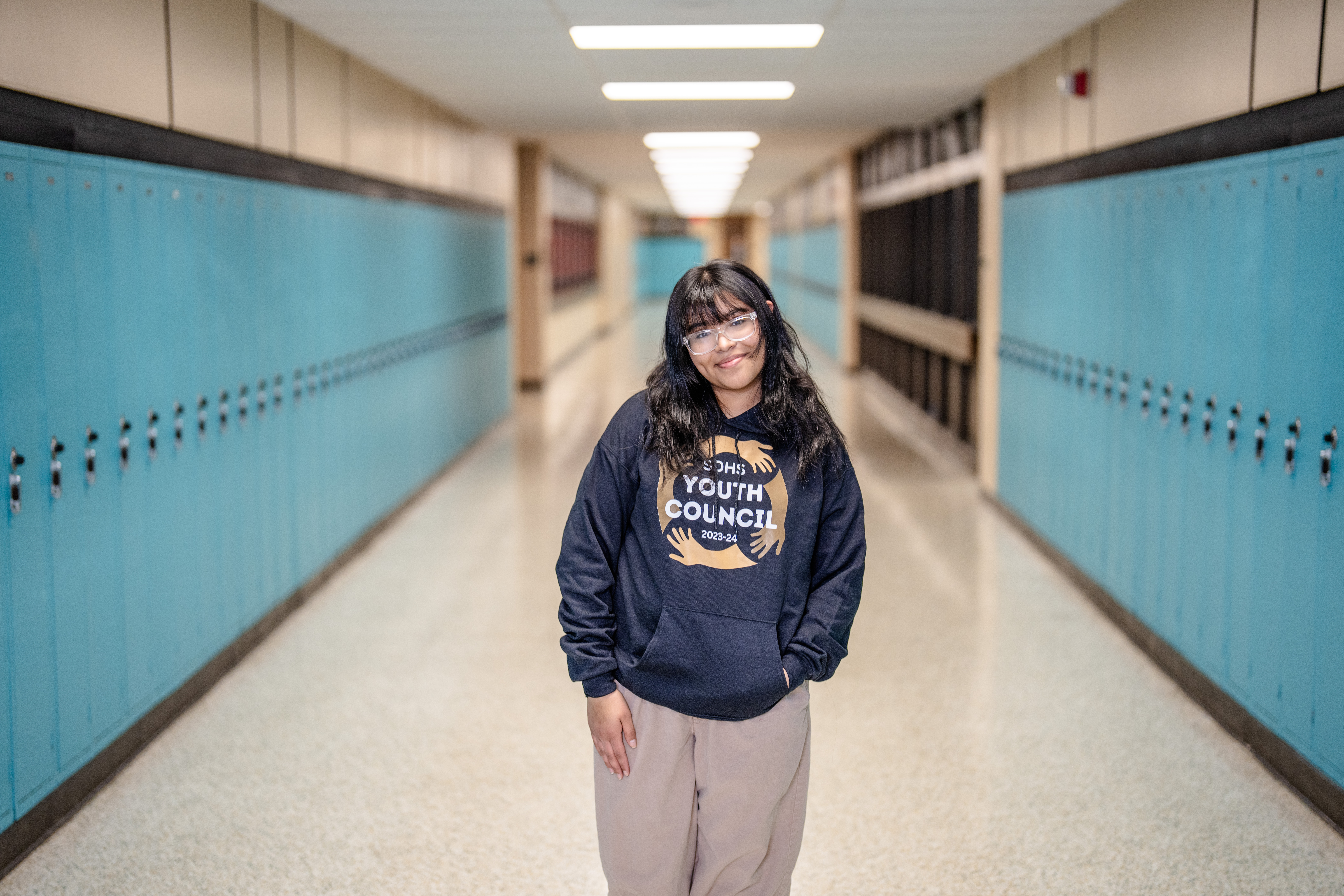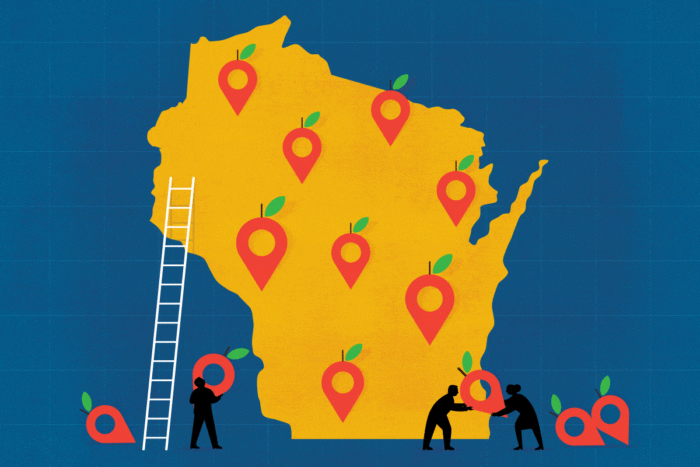For many traditional educators, Dr. Julissa Ventura’s path for improving schools sounds like a role reversal: Teachers, learn from your students.
Put another way, young people are more likely to excel as students when they feel heard and empowered.
That idea is less shocking than it used to be, and well supported by Ventura’s past decade of research into effective student engagement. But elevating student voice and influence in K-12 schools can require shaking up some old-school norms in education. “It’s about giving students more opportunities to be critical thinkers about what’s not working in their schools,” Ventura says. “We should acknowledge their expertise.”
Ventura, assistant professor of educational policy and leadership in the College of Education, is fostering those opportunities in Milwaukee through a prestigious Spencer Postdoctoral Fellowship from the National Academy of Education. Her research and applied “transformative student voice” project are operating in multiple schools that are part of the Milwaukee Community Schools Partnership, a collaboration between Milwaukee Public Schools and Milwaukee Teachers’ Education Association.
In giving students of all ages and backgrounds more say in their educational settings and journeys, the deeper problem is often not a lack of student voices, but a lack of strategic listening from adults in leadership. That’s why the transformative student voice model reimagines how teachers and school staff interact with students. The practice also elevates input from underrepresented student populations that are often dismissed or neglected in traditional learning.
“A lot of students have told me: ‘I’ve learned how to solve problems. I’ve learned patience. And I’ve learned how to work in a team.’”
Dr. Julissa Ventura, assistant professor of educational policy and leadership
“Young people have led movements — movements for gun control and to protect their climate,” she says. “Unfortunately, our young people don’t always hear about that in school.”
Her partnership thus far has focused on several Milwaukee Community Schools within MPS, each of which partners with a lead agency through the United Way and incorporates a youth council in its transformational model. Ventura’s ideas tend to expand the reach of disadvantaged students as meaningful decision-makers in these school settings. “A lot of students have told me: ‘I’ve learned how to solve problems. I’ve learned patience. And I’ve learned how to work in a team,’” she says.
Student input leads to inter-generational collaboration
At South Division High School in Milwaukee, student allies helped new school leaders address excessive suspensions, low attendance and disruptive lunches. Jasmin Prado, a senior and youth council member at South Division, was part of that effort.
Prado says she and other students evaluated the factors contributing to ongoing conflicts during lunch period. After gaining student input, they made a case to the principal to grant students access to other parts of the school rather than being confined in the cafeteria during lunch.
The collaborative exercise led to library and gym access, and more importantly it fostered a sense of choice and freedom in students. “Trying to communicate with others is something I’m going to take with me, and helping others communicate with teachers if they need help,” Prado says.
One recurring challenge Ventura sees in many schools — spanning elementary to university classrooms — is the power differential between teacher and pupil. “I’m trying to diffuse that power dynamic a little bit,” she says.
That change can occur through minor shifts in communication and interaction, rather than sweeping overhauls to teaching methodology or curriculum. As such Ventura insists on referring to transformative student voice as a practice instead of a program or initiative. But it offers key support and training for staff and students.
‘Transformative student voice’ as a practice
At Browning Elementary on Milwaukee’s north side, Ventura has facilitated workshops for teachers who embrace the philosophy “it takes a village” for their students and school community. In collaboration with Dom Portis, community schools manager at United Way, she has helped coordinate youth coalition summits that gather student leaders from across grades and many Milwaukee school buildings. As part of her research fellowship, she interviews student leaders and shares transformative voice practice with community schools coordinators and staff.
In one Milwaukee middle school where Ventura worked with a community school coordinator, a youth council recently identified three key issues disrupting learning in their school: chaotic hallways, old classroom materials (including uncomfortable desks and chairs) and poor student-teacher relationships.
The group of sixth, seventh and eighth graders in leadership then probed each issue to identify the core common thread. Their investigation kept circling back to student-teacher interactions. They hope to center this theme and pursue strategic solutions with leadership in the following school year.
For Prado at South Division High School, one of Ventura’s sayings, “step up and step back,” became a sort of mantra to help navigate interactions between fellow students and teachers: “I like to share my opinion, but sometimes I need to let others talk and hear their opinion.”
The benefits of learning from each other
Another takeaway for the high school senior: gaining a glimpse of the complexity that school leaders face. Once you try to address one particular problem, she says, you find many other issues and concerns stacked up behind it.
For teachers in the classroom, implementing transformational voice methods can start by asking thoughtful, personal questions of their students, such as where they live and what local history is relevant to their lives.
In Ventura’s university classrooms, she has started incorporating more podcasts in lesson planning based on student preferences for media platforms and learning styles. She also seeks student feedback midway through each semester, then discusses with students their opinions and suggested changes to redirect the rest of the semester’s learning. “What I’ve been thinking about is how we train our future generation of teachers, which is something we do at Marquette,” she says. “You have to be a teacher who is willing to learn from your students.”

